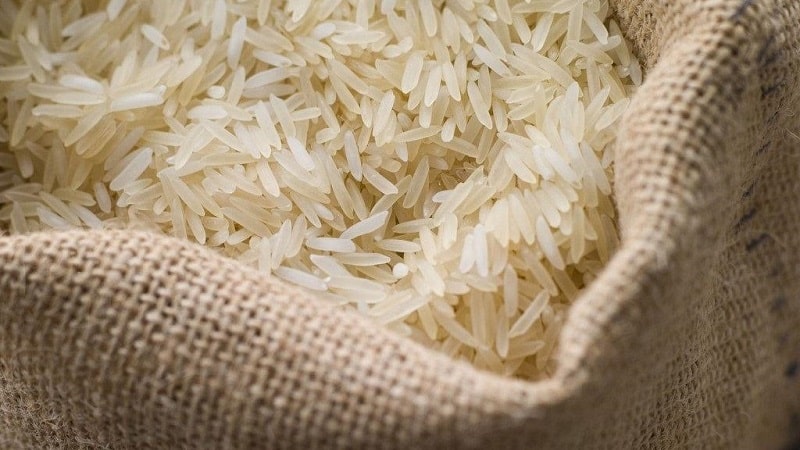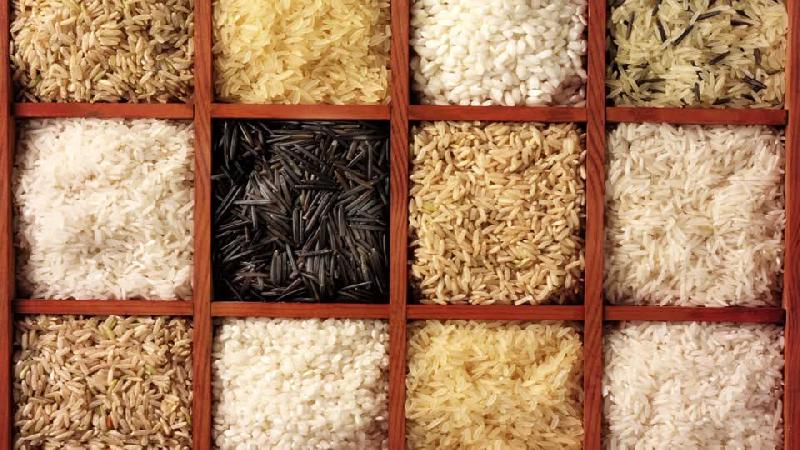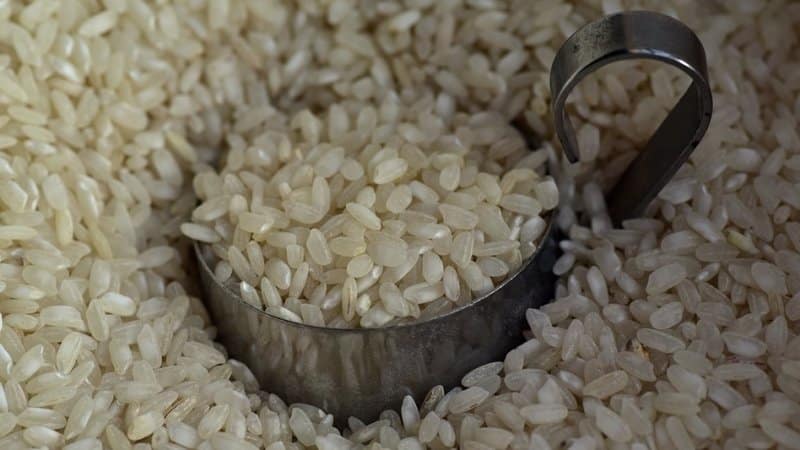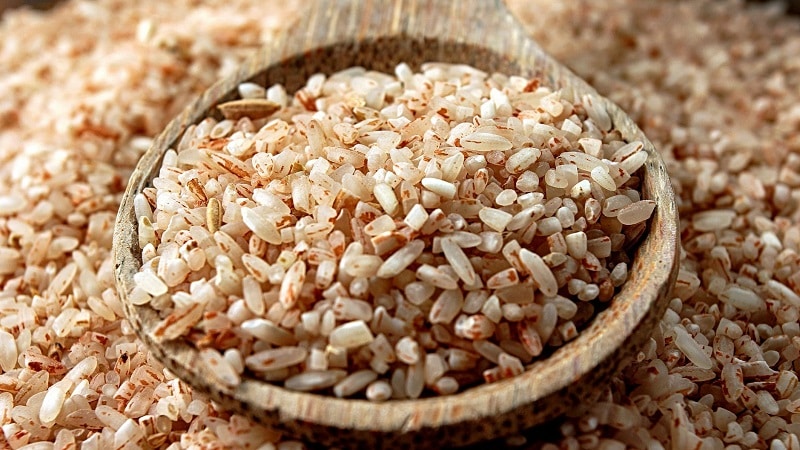How to properly store rice at home and how long it can be stored
Rice is an important cereal plant that feeds more than half of the world's population. Grow a variety varieties, grains of which differ in taste, appearance, nutritional and beneficial properties. The most common type is white rice, which is freed from the bran shell during the grinding process. Due to the loss of most of the beneficial substances contained in it, it is considered the least useful. Healthy eating includes brown (brown) brown rice, alternatively white parboiled rice.
When choosing one of the varieties, pay attention to the expiration date. Each type of cereal has its own, depending on the grain processing technology, conditions and region in which it is stored. We will tell you about the shelf life of rice, how to store rice at home and at what temperature, what happens to the grain over time, how to determine the quality of the grain and whether it is possible to use an expired product for food.
Shelf life of rice: what GOSTs say
The shelf life is established by the GOST standard 6292-93 “Rice cereals. Technical conditions" and is 10-18 months. Specific shelf life for each type of cereal is contained in table No. 2 of GOST 26791-89 “Grain processing products. Packaging, labeling, transportation and storage."
The shelf life of rice depends on the technology of grain processing in the factory.Unrefined cereal varieties contain rice oil in the bran shell, which can quickly go rancid. The shelf life of such rice should not exceed 12 months. If the manufacturer indicates a longer shelf life, this should alert you. Most likely, the grains were additionally subjected to chemical treatment, which increases their storage time but reduces their beneficial properties. Such cereals in large quantities are dangerous for the human body and can cause food poisoning.
Longer storage is allowed for white rice - from 16 to 18 months. Expiration dates vary depending on the region in which the cereal is stored. The shelf life of milled rice in Ukraine, Central Asia, the Lower Volga region, the Northern and Southern Caucasus, and the countries of the Far East is 12 months; in other regions (former countries within the USSR) - 18 months.

Expiration dates in packaging and after opening
There are no approved standards regarding how long rice is stored before and after opening consumer packaging; it depends on the percentage of humidity, temperature and other climatic indicators.
If we focus on average data regarding shelf life, then the maximum shelf life of cereals after opening is the same as the storage time in the package, provided that storage rules are followed. That is, if the manufacturer specifies a shelf life of 12 months, after the integrity of the packaging is damaged, the cereal can be used within a year.
How to properly and for how long to store rice at home
After opening the original packaging, the cereal for further storage must be poured into a dry, sealed container made of glass, plastic or ceramic with a tight-fitting lid.
For reference. When the humidity is above 75%, the grains stick together into lumps, an unpleasant specific smell appears, which is caused by rancid fatty compounds, and moths and worms can appear.
Moisture should not be allowed to penetrate inside, since high humidity shortens the shelf life of rice and creates favorable conditions for the growth and reproduction of pests and the formation of mold.
The optimal storage temperature for rice is 5-15°C, the humidity level is no more than 65-70%. It is important to avoid direct exposure to sunlight.
Advice. A bag of salt will protect the cereal from excess moisture and prevent the appearance of an unpleasant odor.

Where and how to store dry rice
It is not recommended to store rice in original packaging, especially after opening. For long-term storage of cereals, use glass, ceramic or plastic containers with an airtight lid. Alternatively, grains are stored in textile bags, but they are significantly inferior to airtight containers.
The jar of cereal should be in a dark, dry and cool place. A pantry or kitchen cabinet is ideal. Sudden changes in storage conditions adversely affect the taste and beneficial qualities of the product. It is advisable to place rice cereals next to other cereals and avoid proximity to spices and products with a pronounced odor.
Experienced housewives say that it is ideal to use a refrigerator to store dry rice cereal at home:
- at low temperatures the likelihood of insect pests is reduced;
- shelf life increases by several months;
- If there are insects in the cereal, they will simply freeze and will not be able to reproduce further.
Dried rice can be stored in the freezer for 6 to 8 months. The cereal is pre-packaged in plastic bags or plastic containers with a lid or stored in the original packaging.
What happens to cereal over time

Regardless of the variety, rice contains starch. During long-term storage, grains become saturated with moisture, which leads to spoilage of the product. A high moisture content creates favorable conditions for the formation of mold fungi, after which it is strictly prohibited to eat such a product even after heat treatment.
Advice. To minimize the likelihood of bugs appearing in rice cereals, you need to add several cloves of unpeeled garlic, mint-flavored chewing gum, dried lemon or orange zest, hot capsicum, and bay leaves to the grains.
How to determine if rice is edible
When buying cereal in a store, choose a product in transparent packaging - this way you can visually assess the quality and appearance of the grain, and the presence of foreign impurities. Preferably, premium rice from domestic suppliers or a foreign product from trusted and well-known manufacturers.
Before using rice grains for cooking, pay attention to the appearance and smell. A good quality product has no foreign odor, the grains are intact, without black inclusions or foreign impurities or insects.
A musty smell, the presence of a large number of yellow grains in the cereal, and the formation of lumps indicate that the rice is of poor quality and expired, so it should not be eaten.
There are other ways to determine the quality of rice grains at home:
- Pour 1 tbsp into a container with cold water. l. dry rice, mix. The grains should settle to the bottom. If they surface, this indicates that the rice contains substances harmful to the human body; it is better to discard it.
- If you set fire to plastic rice, it will immediately catch fire and smell like burnt plastic. Real high-quality cereal is difficult to ignite.
- Grind a few grains of rice in a mortar: white powder is a sign of high quality, yellow powder indicates fake rice from China.
- If you place an airtight container with cereal in a warm place, after a few days mold should appear in the rice. If this does not happen, you have a low-quality product.
Is it possible to use expired food?

According to established sanitary and epidemiological requirements, it is not recommended to consume expired products, including rice. However, as practice shows, it is permissible to consume cereals after the regulated shelf life if the grains have retained their proper appearance and do not have any foreign odor, mold, or insects. But you can use such rice if the expiration date has recently expired. When several years have passed from the final date of consumption, cereals should not be consumed.
Advice. Before buying cereal, look at the production date and shelf life of the rice indicated on the back of the package. There you can also find information about calorie content, nutritional value, cooking methods, and manufacturer.
How long does cooked rice last at room temperature?
Store cooked cereal in the refrigerator.In this case, the shelf life of rice is 72 hours, in the freezer - up to 3 months. Since rice has the ability to absorb odors, it must be stored in a clean, airtight container.
Rice can be kept at a temperature of 10-30°C for no more than 3 hours. Afterwards you cannot eat it.
Read also:
Is it possible to eat rice if you have gastritis?
Can an allergy to rice occur and how does it manifest itself?
Conclusion
The shelf life of rice at home varies from 10 to 18 months depending on the variety. The shelf life of a product is affected by humidity, temperature, storage location, and the appearance of insect pests.
To prevent rapid spoilage of grain, it is necessary to follow storage rules and initially choose high-quality, premium grain from a domestic manufacturer.